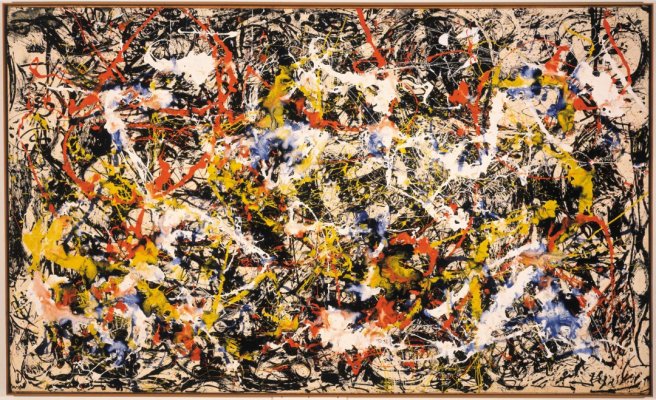Knox, Jr., worked in close collaboration with Director Gordon M. Smith from 1955 through the early 1970s to acquire cutting-edge art for the museum’s collection. Exploratory trips, mainly to New York, were a critical part of the process. Smith made initial visits to galleries; set up viewings with Knox, Jr.; and then, if a work passed muster, facilitated its shipment to Buffalo. Among the many works brought into the collection through their endeavors were Arshile Gorky’s The Liver Is the Cock’s Comb, 1944; Jackson Pollock’s Convergence, 1952; Franz Kline’s New York, N.Y., 1953; Adolph Gottlieb’s Frozen Sounds II, 1952; Sam Francis’s Blue-Black, 1952; and Mark Rothko’s Orange and Yellow, 1956—all of which were accessioned on a single day as gifts through funds provided by Knox, Jr. Other gifts from Knox, Jr., include signature works by Francis Bacon, Willem de Kooning, Richard Diebenkorn, Helen Frankenthaler, Grace Hartigan, Hans Hofmann, Jasper Johns, Lee Krasner, Roy Lichtenstein, Marisol, Agnes Martin, Joan Mitchell, Robert Motherwell, Bridget Riley, David Smith, Clyfford Still, and Andy Warhol, several of which were purchased from Martha Jackson’s New York gallery
Gifts from Seymour H. Knox, Jr.
Businessman and “dean of American art patrons” Seymour H. Knox, Jr., was elected president of the Buffalo Fine Arts Academy Board in 1938. A short time later, he and other members of the Knox Family provided the inaugural donations for The Room of Contemporary Art, the purpose of which was to present and implement an artist-centric philosophy of collecting. The Room resulted in the immediate acquisition of masterworks by Paul Cézanne, Giorgio de Chirico, Paul Klee, Fernand Léger, Henri Matisse, Joan Miró, Amedeo Modigliani, Henry Moore, Pablo Picasso, Henri Rousseau, and Chaïm Soutine. It also helped to facilitate the museum’s acquisition of Henry Moore’s Reclining Figure, 1935–36, the first work by the British sculptor to enter the collection of an American art museum.

Jackson Pollock (American, 1912–1956). Convergence, 1952. Oil on canvas, 95 1/4 x 157 1/8 inches (241.9 x 399.1 cm). Collection Albright-Knox Art Gallery, Buffalo, New York; Gift of Seymour H. Knox, Jr., 1956 (K1956:7). © The Pollock-Krasner Foundation / Artists Rights Society (ARS), New York.

Installation view of Selections from the Seymour H. Knox Collection of Contemporary Arts and Recent Gifts (September 11–Saturday, October 17, 1959). Image courtesy of the Albright-Knox Art Gallery Digital Assets Collection and Archives, Buffalo, New York.









